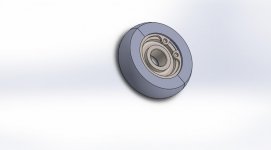Cabbagecreek
Plastic
- Joined
- Jun 27, 2016
View attachment steelpoolwheel STL.zip
![[Sketch1 of steelpoolwheel.SLDPRT _].jpg [Sketch1 of steelpoolwheel.SLDPRT _].jpg](https://www.practicalmachinist.com/forum/data/attachments/147/147505-1b5d6c8a6602c929c0bb643e3342da21.jpg)

The "wheel" can be made of stainless steel or aluminium.
The drawings are made in SolidWorks and can be transformed to many formats. It was not possible to upload the drawing because the drawing is 122kB
The wheel is 35mm OD and 22mm ID and a grove inside and the wheel is 10mm thick.
I need 60 wheels.
![[Sketch1 of steelpoolwheel.SLDPRT _].jpg [Sketch1 of steelpoolwheel.SLDPRT _].jpg](https://www.practicalmachinist.com/forum/data/attachments/147/147505-1b5d6c8a6602c929c0bb643e3342da21.jpg)

The "wheel" can be made of stainless steel or aluminium.
The drawings are made in SolidWorks and can be transformed to many formats. It was not possible to upload the drawing because the drawing is 122kB
The wheel is 35mm OD and 22mm ID and a grove inside and the wheel is 10mm thick.
I need 60 wheels.

